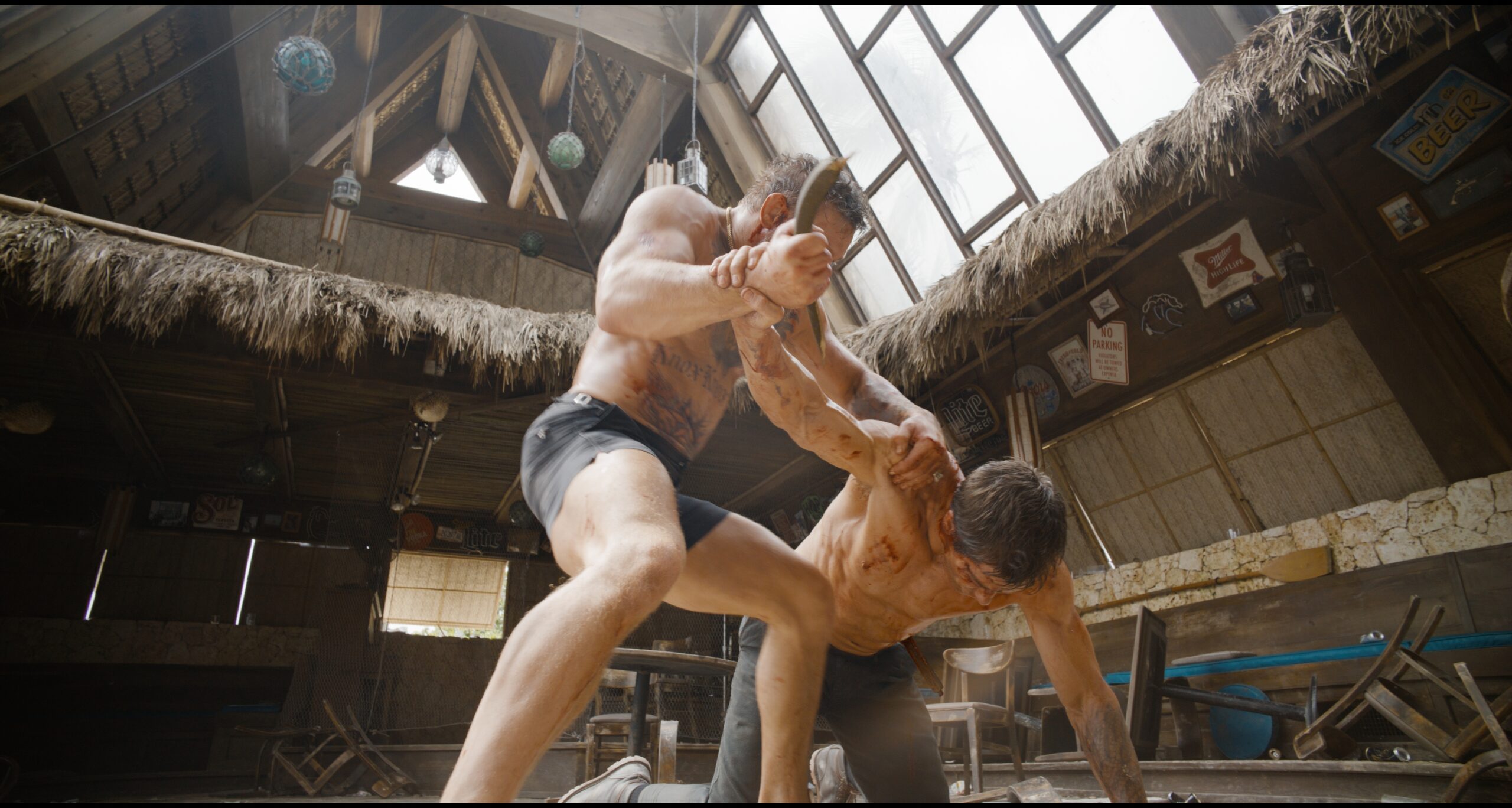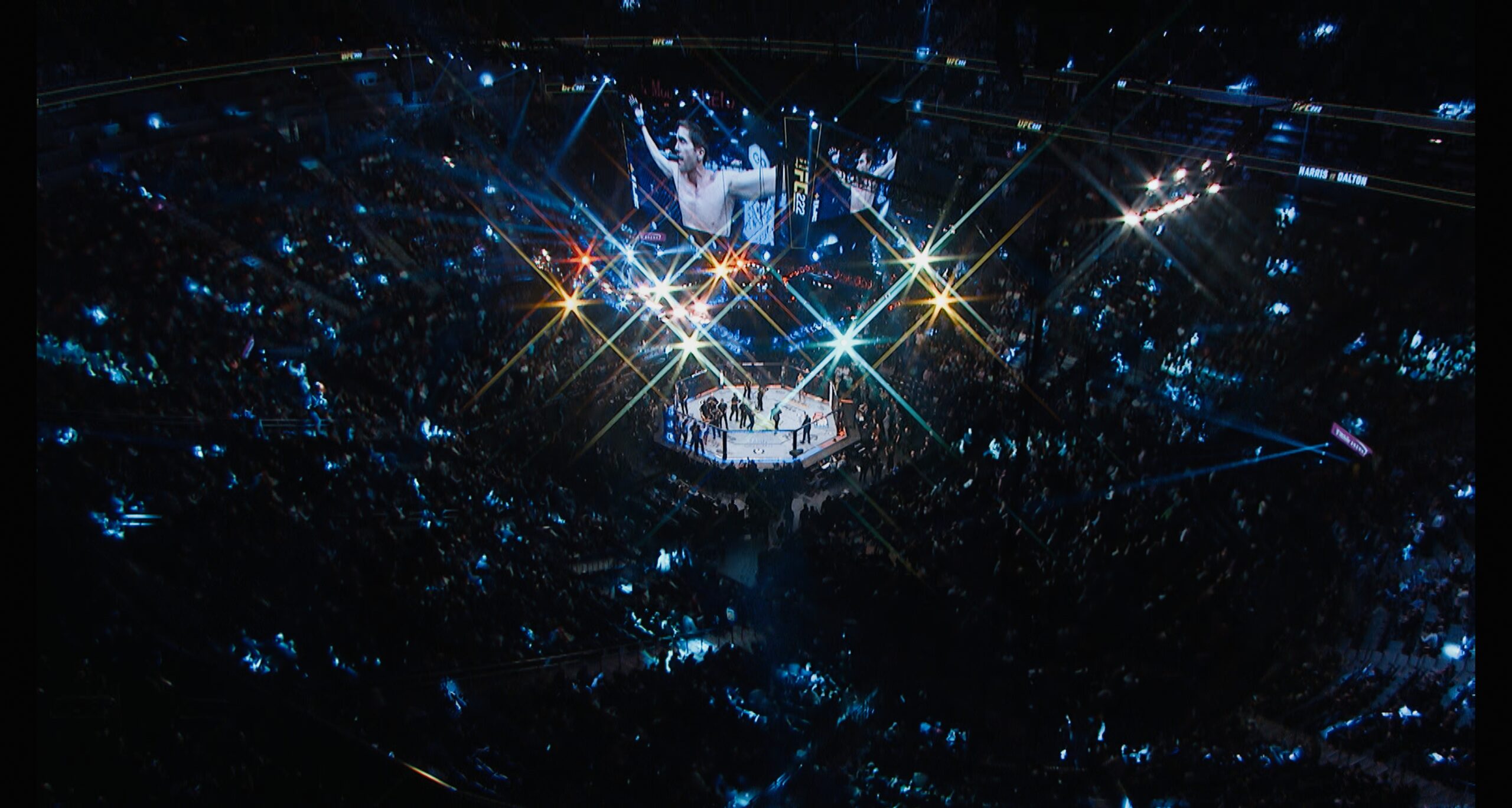
In the adrenaline-fueled world of “Road House,” every punch and kick packs a visceral impact. Collaborating closely with MGM and Amazon, and the production team, Cinesite crafted over 240 VFX shots, enriching the storytelling experience of the film. Director Doug Liman’s commitment to authentic fight scenes led to convincingly improvised choreography, with the support of stunt coordinator Garrett Warren and VFX supervisor Grant Hewlett.
The VFX team started out by analysing multiple action films, as well as closely observing real-life UFC matches to research approaches and gather inspiration. In the quest for authenticity, Garrett Warren, former UFC fighter turned stunt coordinator on the film, aimed to capture the raw essence of real fights between Jake Gyllenhaal (Dalton) and Conor McGregor (Knox).

A/B Mastering Fight Scenes
A range of traditional fight techniques were used for the more straight-forward punch shots. However, a new technique was devised for the realistic hits needed for some of the more dynamic shots, involving the capture of A,B,C and D passes. In simple terms, these were:
A – a slow motion performance by the actors of the hit, without pads
B – the hitter punching a pad in real time, positioned in line with the victim’s face
C – the victim is hit in real time, on a pad held up to their face
D – a clean background without actors
A combination of these takes was used, with clean-up techniques and even CG fists or arms, depending on the requirements of each individual shot. Floor markers guided the actors to the exact points at which the impacts should connect, and the soundtrack, complete with hit sounds, was played back during filming, to help with impact alignment.
The actors and stunt performers did a fantastic job, delivering hard-hitting punches and reacting realistically to hits (the hardest performance aspect to nail), while consistently hitting their marks. Camera techniques were also used to add drama and seamless transitions, including wipes with punches, whip pans, camera impact bumps, pulling focus to the surrounding crowds, and light flares.

Finale Fight
In the climactic fight, the VFX team also added the small, pointed wooden weapons used by Dalton and Knox, known by the team as “stabby sticks.” Multiple layers of digital matte painting were employed to depict wounds, alongside FX for dripping blood and the CG stick extensions.
Set in the Florida Keys, many of the VFX in Road House involved boats and boat chase sequences, with stunts which needed to be seamlessly integrated into a wider ocean environment.

Navigating Rough Waters: The Boat Sequence
In one exciting sequence set on a yacht, Dalton detonates an explosion, causing the vessel to burst into flames and gradually sink. A combination of fire and FX including billowing black smoke were added, in addition to enhancing the boat’s interior by adding CG furniture, to make its precarious listing more convincing. A digital replica of the yacht needed to be created, which was used primarily for the wide external shots of the vessel finally sinking. By this point, the actors have been flung into the water and onto speedboats, so the burning boat needed to be seamlessly composited into the background.

The Train Stunt
In another sequence earlier in the film, in a despairing moment Dalton parks his car on train tracks as a distant train approaches. Changing his mind at the last minute, he lurches forward a little too late; the train clips his trunk, spinning his car around and giving him a narrow escape.
Initially, the plan was to film the stunt using a real train and car on an SFX rig, although VFX supervisor Grant had built the scene digitally to facilitate possible visualisation discussions. These preview shots proved invaluable and as the sequence evolved on set he was able to quickly illustrate changes. Ultimately, the decision was made to fully render the train and car as computer generated elements, notably in the pivotal impact shot, where we see the impact upon the rear of the car. The role of pre-visualization was pivotal in this instance, guiding the decision-making process and supporting the creativity of the director.
The success of the action sequences in Road House is a testament to the spirit of collaboration between the stunt and VFX teams, with the perfect combination of physical and digital skills. Crafting realism was an endeavour which everyone on the crew set out to deliver and Cinesite is proud to have been fundamental to that success.
